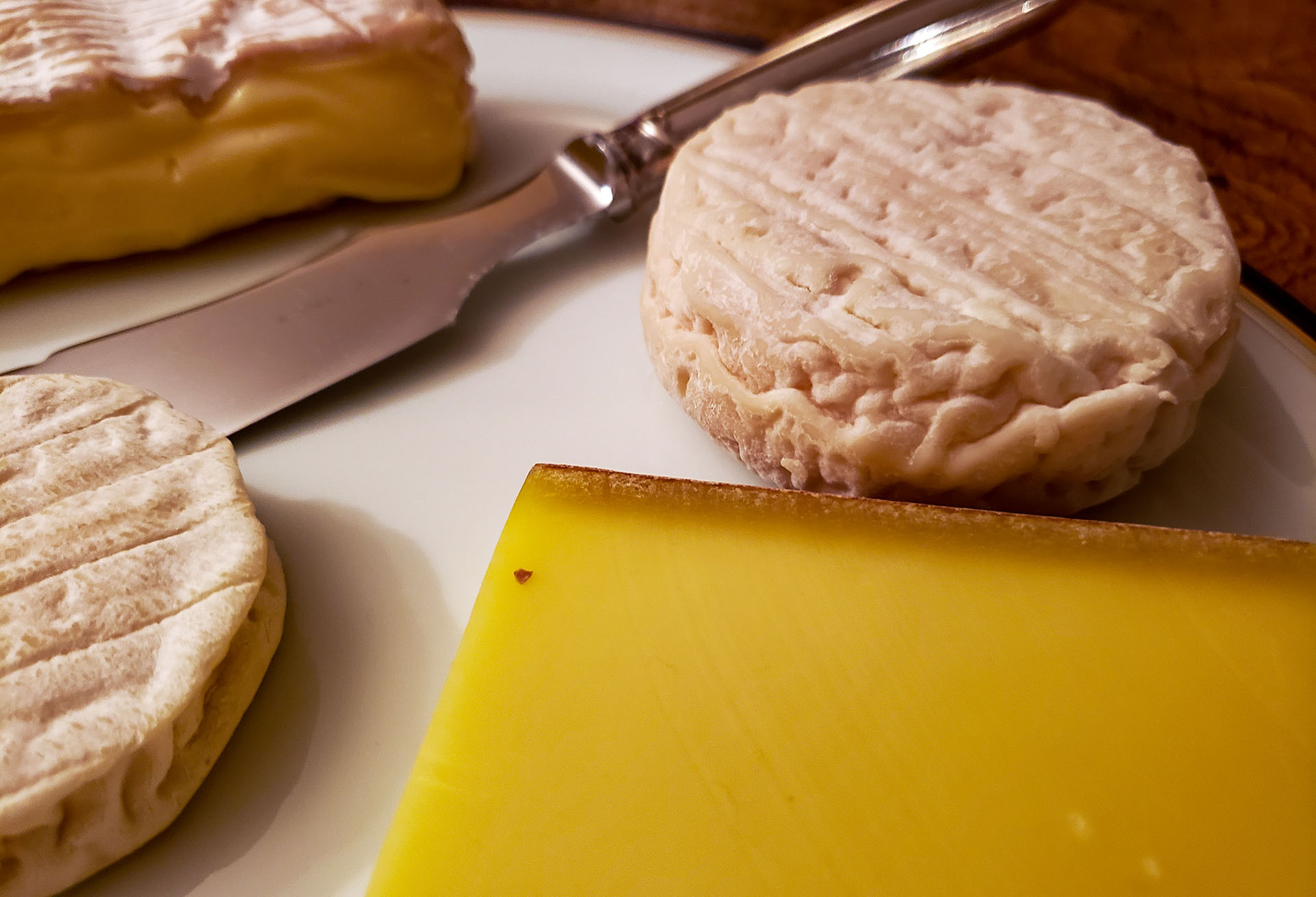
Cheese : A Cultural Experience
In Europe, cheese is way more than food — it’s a way of life!
With thousands of cheese varieties to discover, Europe is a cheese lover’s paradise. Each variety has its own history, shape, texture, flavor and smell. From soft and creamy to hard and crumbly, it's safe to say that there is a cheese to delight every palate.
France, Italy, and Switzerland have the world-famous cheeses: Brie, Parmesan, and Gruyère. But the Netherlands, Spain, and Greece have their own stars too: Gouda, Manchego, and Feta. No matter where your European vacation takes you, an opportunity to taste a new cheese awaits you!
European cheese is deeply connected to the local environment and the land it comes from. The animals’ diet, the climate and even the terrain all influence how a cheese tastes. For example:
Parmesan and Parmigiano Reggiano is produced in two Italian provinces, Parma and Reggio Emilia. That's where its name originated. The Italian adjective for the city and province of Parma is Parmigiano. The Italian adjective for the province of Reggio Emilia is Reggiano. All other cheeses produced using the same technique are imitations.
Roquefort comes from the raw milk of a local sheep of the Tarn and Aveyron region called the Lacaune breed. It is aged in the natural Combalou caves of Roquefort-sur-Soulzon in France. Only those may bear the name Roquefort.
Gouda is named after the city of Gouda in South Holland in the Netherlands. The city acquired sole market rights in the Middle Ages. All county farmers would bring their cheese to the market square in Gouda to be sold.
Manchego is made from the milk of sheep of the Manchega breed in the La Mancha region of Spain. The aftertaste is characteristic of sheep's milk.
These cheeses are ambassadors of the regions they come from. Tasting these cheeses is an invitation to travel through your senses to these places. The European Union granted them Protected Designation of Origin (PDO) status (Parmigiano Reggiano 1996, Roquefort 2008, Noord-Hollandse Gouda 1996 and Gouda Holland 2010, and Queso Manchego 1996).
Geographical Significance
Comté is an Alpine cheese from the Jura Mountains, a region of eastern France. It was one of the first cheeses to receive Appellation d'Origine Contrôlée (AOC) recognition in 1958. This translates to "controlled designation of origin". This certification of authenticity clearly outlines manufacturing process regulations. At around 65,000 tonnes annually, it has the highest production of all PDO cheeses in France. Aging time, thus taste and texture, vary greatly from 4 to 36 months.
Gorgonzola is a creamy Italian blue cheese with a pungent flavor. It comes in two variations: dolce and picante. Gorgonzola has been crafted since the 9th century. Its name comes from the Lombardian town of Gorgonzola in the Metropolitan City of Milan. Every September, the town holds a festival to celebrate. It is called the Sagra Nazionale del Gorgonzola. Gorgonzola cheese was recognized as Denominazione di origine controllata (DOC) in 1955. This is the Italian version of "controlled designation of origin".
Feta is a white, crumbly cheese made with sheep milk or with a mixture of sheep and goat milk. It is produced the traditional way in mainland Greece and aged in brine, a solution of salt and water. Unlike many cheeses it has no rind, or what people commonly refer to as a "skin". Feta is believed to have existed during the times of Homer in ancient Greece. Several European counties had started producing feta, too. This made the POD registration process long and difficult. Finally, Feta was certfied as POD by the European Union in 2002.
You know you’re getting the real deal - and not something cheesy - when you see a PDO label.


Feta Cheese
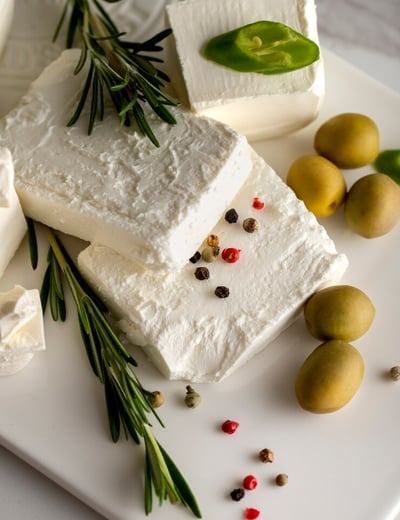

Have you ever wondered why most European cheeses taste so unique and authentic? It’s thanks to Protected Designation of Origin (PDO) laws in the European Union. These rules ensure that food-related products are made using traditional methods. It guarantees that producers use local ingredients, follow the recognized know-how, and operate in a specific geographical area. Many European countries had origin labels at the national level since the 1950s. The European designation was created in 1992 and is a stamp of authenticity and quality.
Protected Designation of Origin (PDO)
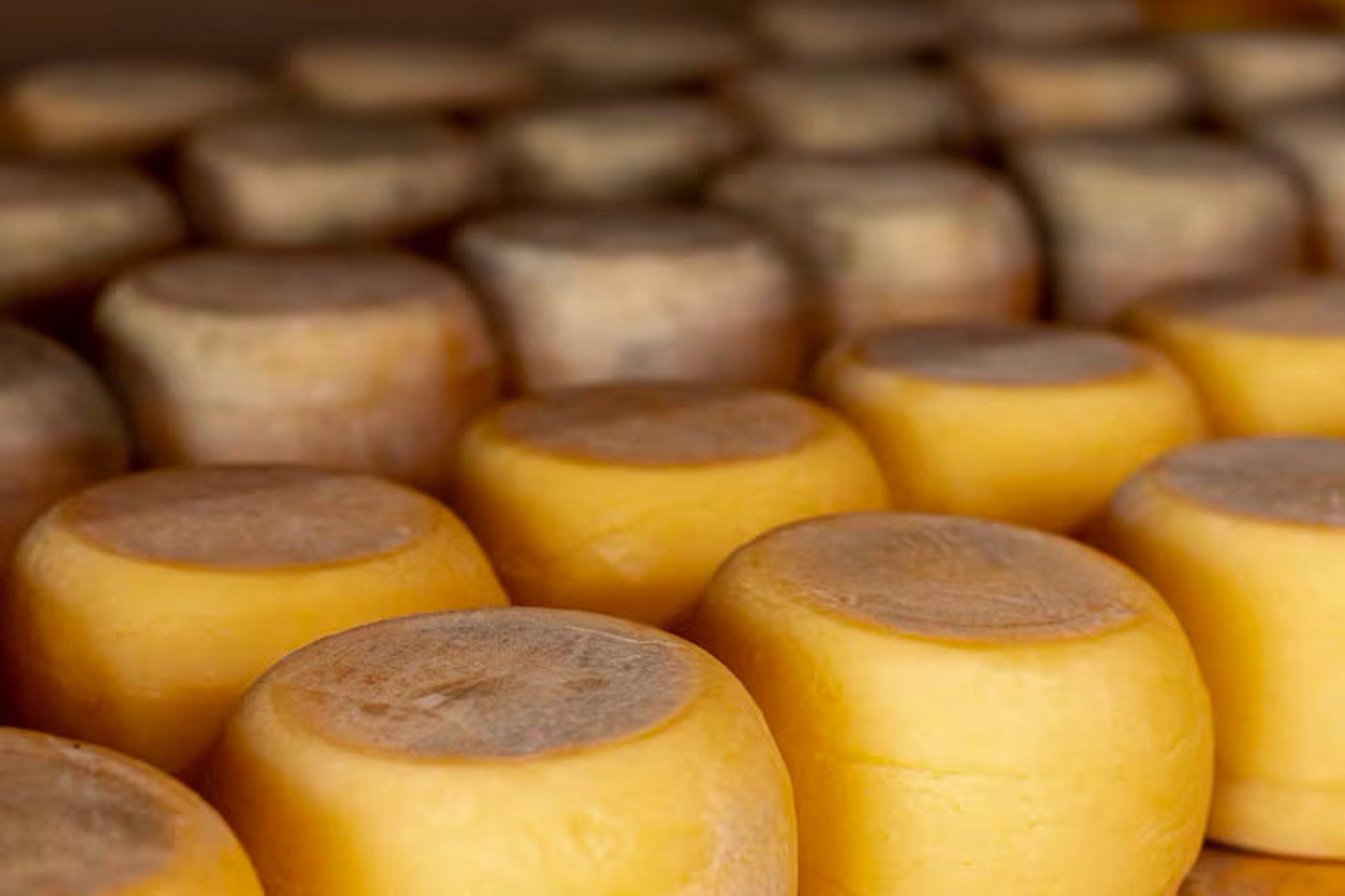
Cheese isn't just a food in Europe, it’s a big part of daily life!
In France, family meals often feature a cheese platter after the main dish and before dessert. Adults enjoy it with fresh bread and a glass of wine. In restaurants, the cheese platter is offered as a menu item called "plateau de fromage".
In Italy, cheese is everywhere in cooking from appetizers to desserts... yes, you read it right even desserts! Think of the melting mozzarella on pizza or the sharp Parmesan grated above a pasta dish. Remember Tiramisu, a famous sweet dessert at Italian restaurants. Did you know it stars creamy mascarpone cheese as one of the main ingredients?
Let's not forget to mention high-quality dedicated cheese stores everywhere in Europe. In European kitchens, cheese functions both as a simple nutritious snack and part of a fancy dish. It's not hard to understand why when cheese is so easily available and delicious.
Cheese As Part Of Culinary Culture
When to Serve Cheese:
This differs country by country, which makes things a bit challenging. In France, cheese is typically served after the main course - called "entree" - and before dessert. It is savored as a separate course, often accompanied with fresh bread and a glass of wine. On the contrary, cheese is rarely served on its own in Italy. It's most often used as an ingredient in dishes like pizza, pasta and salads.
Cheese Etiquette and Traditions
In Europe, cheese is a big deal and a real cultural experience. How do you navigate every type of cheese available? If you wish to make your tasting more enjoyable and authentic, here are a few helpful pointers to follow:
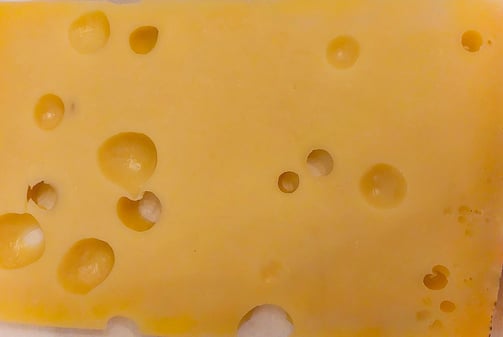

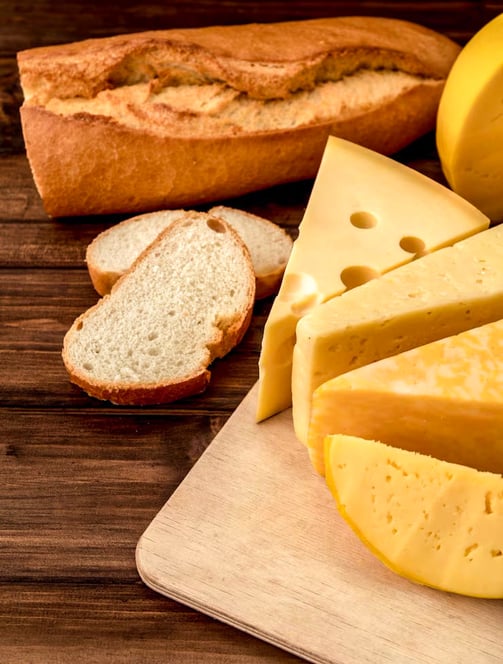

Bread Rules:
Cheese is mostly paired with simple white bread like baguette or ciabatta. One of the reasons is to showcase the cheese flavors. Europeans don't add condiments either because it would interfere with the existing flavors. There a couple of exceptions like chutney or honey that you might see served with cheese.
Don’t Overdo It:
While you are in Europe, it may be tempting to pile your plate. After all you have been reading about all these delicious cheese varieties and can't wait to try them. This would not look good, especially in a restaurant. Cheese isn't meant to be rushed through ; it is meant to be savored. Moreover, it gets harder to notice the individual flavors after 3 or 4 different cheeses. At home, a better way is finish your plate, and then serve yourself again in small portions.
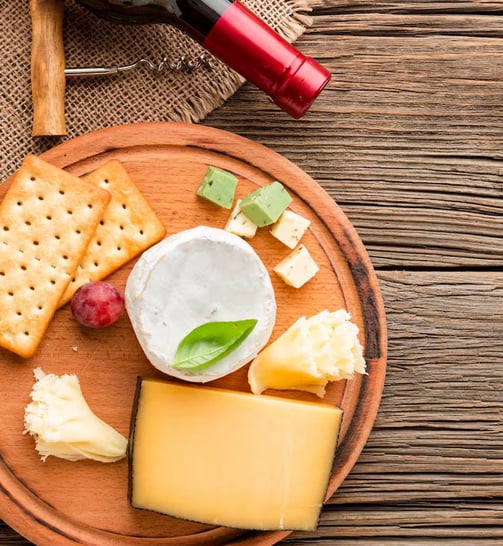

How to Cut Cheese:
Cheese comes in so many shapes and textures. There’s a proper way to cut cheese. In France, you should cut soft round cheeses like Camembert and Brie in wedges. Therefore, everyone gets an equal share of the creamy center and the firmer edges. For hard cheeses like Comté, you should cut a neat and even slice. When in doubt, we suggest paying attention to what your hosts do so that you can duplicate their actions.
Observing these customs will give you a glimpse in century old traditions. They help in eating cheese for maximum enjoyment. And you will blend in with the locals, and who doesn't like that?
Brie with Champagne
Brie is a soft cow's-milk cheese which was first created in France. The intense character of Champagne pairs nicely with creamy cheeses. Its fruit notes and bright acidity cuts through the richness. Opt for a brut or extra brut Champagne (lowest sweetness).
Cheese Pairings: From Classics to Surprising Matches

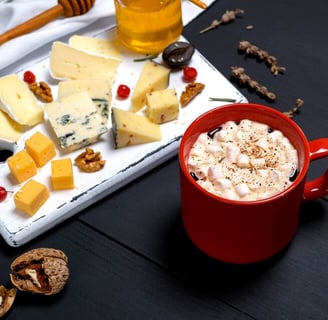
Pecorino with Chianti
Pecorino is a hard, dry, salty cheese produced from sheep's milk in Italy. Its herbal notes, and bold flavor work well with the savory notes, and black fruits of Chianti. The pair is an excellent example of the adage, “What grows together goes together.”
Gruyère with Riesling
Gruyère is a hard Swiss cheese that originated in Switzerland. A crisp Riesling balances gruyère's almost sweet, nutty flavor. Wines of the Alsace or Savoie regions of France work very well too.
Beer
Belgium is renowned for its diverse and high-quality beers. So it's no wonder that it leads in beer-cheese pairings. An easy pairing is Chimay Trappist beer with Chimay cheese, which creates a bold, savory combo. German Weissbier (white beer) complements well mild Emmental or Bergkäse (mountain cheese).
Honey & Jam
Their sweetness contrasts with cheese's savory taste. Try honey over Ricotta, Parmigiano-Reggiano, or fresh goat cheese. Try fig jam with soft cheeses like Camembert and Brie. The sharper the cheese, the sweeter the jam should be.
Tea
Big personality cheeses go well with bold, black teas. A side of light and creamy cheese complements any herbal tea. Creamy rich cheeses pair surprisingly well with Earl Grey or Darjeeling.
In Europe, cheese pairing is an art form. Locals know exactly what to serve with their favorite cheeses to bring out the best flavors. While mostly paired with wine, here are some other pairings that may delight your senses:
Classic Wine Pairings
Apples & Pears
Crisp fruits add freshness to nutty alpine cheeses like Comté or Gruyère. A pear classic pairing is a creamy, mild cheese such as brie. The rich, smooth texture of brie complements the juicy sweetness of pears. Another very popular pairing for pears is blue cheese. Bold and tangy flavors contrast beautifully with subtle sweetness on the palate.
Chocolate
Yes, our most beloved sweet and savory indulgences come together! Cheese and chocolate share nuanced notes and textures that enhance one another. Aim to match intensity and texture, while flavors can play off each other. Here's a combination not for the faint of heart: dark chocolate and blue cheese!


Beyond Wine
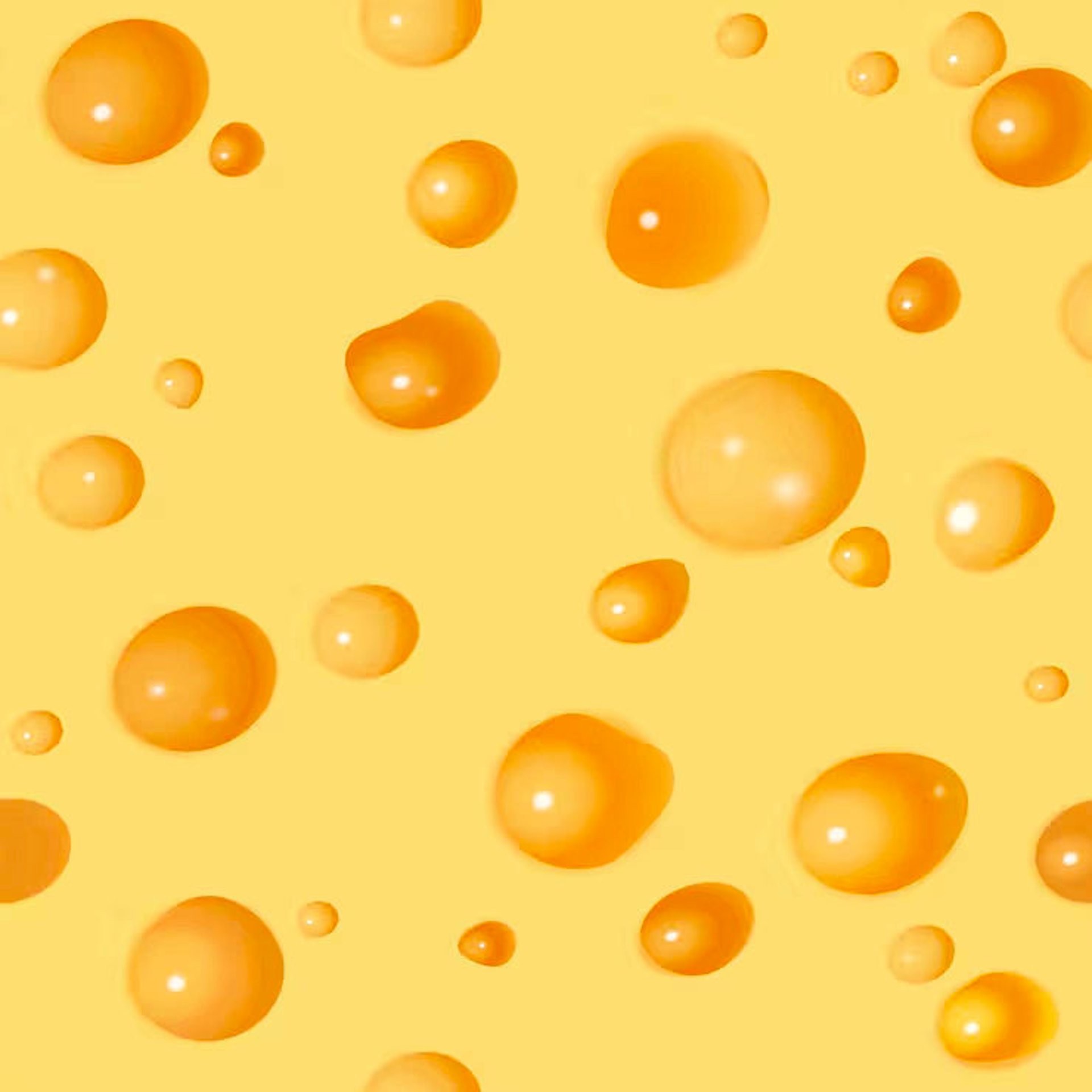
Fun Facts About Cheese in Europe
Cheese in Europe isn’t just delicious—it’s full of fascinating history, quirky traditions, and surprising facts. These tidbits can add a layer of fun to your cheese-tasting adventures while traveling!
France Has Over 1,000 Cheeses
France is often referred to as the cheese capital of the world, and for good reason! The country boasts more than 1,000 varieties of cheese. There’s even a famous quote from Charles de Gaulle: “How can you govern a country which has 246 varieties of cheese?” Whether soft, hard, blue-veined, or fresh, there’s a French cheese for every day of the year—and then some!
Parmesan Can Be Used as Collateral for Bank Loans in Italy
In Emilia-Romagna, the birthplace of Parmigiano Reggiano, wheels of Parmesan are so valuable that they’re used as collateral for bank loans. A single wheel can cost hundreds (even thousands) of euros and can take years to mature. Banks even have climate-controlled vaults to store these "cheese investments."
Gouda Makes Up Over 60% of Dutch Cheese Production
The Netherlands produces massive amounts of cheese—almost 2 billion lbs. annually! Of that, Gouda accounts for more than 60%. The Dutch even have entire markets dedicated to trading Gouda, like the Alkmaar Cheese Market, where you can watch traditional cheese auctions.
Feta Is One of the Oldest Cheeses in the World
Feta cheese has been made in Greece for over 8,000 years! It’s even mentioned in Homer’s Odyssey when Cyclops Polyphemus is said to have made a cheese very similar to Feta using sheep and goat milk. Today, Feta is one of Greece’s most iconic foods and has PDO protection to ensure its authenticity.
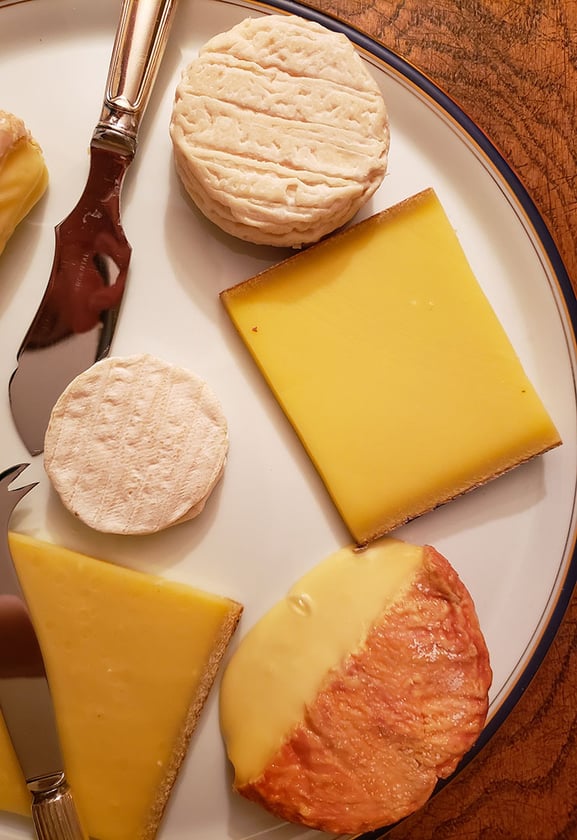

A Cheese Fell from Heaven in Belgium
According to local legend, Belgium's Herve cheese was a gift from heaven—literally. A priest supposedly prayed for food during a famine, and Herve cheese "fell from the sky." This pungent washed-rind cheese has been produced in the town of Herve since the Middle Ages and remains a staple of Belgian cuisine.
The Largest Cheese Fondue Was Made in Switzerland
Fondue might be synonymous with Switzerland, but did you know it holds the record for the largest fondue ever made? In 2014, Swiss cheesemakers melted over 1,400 pounds of Gruyère and Vacherin Fribourgeois to create enough fondue to serve more than 5,000 people at once!
Greeks Eat More Cheese Per Capita Than Anyone Else
You might think France or Italy would top the list for per capita cheese consumption, but Greece actually takes the crown! Greeks consume over 50 pounds per person annually, with Feta accounting for more than half of their total cheese intake.
Austria’s Graukäse Almost Disappeared
Graukäse ("gray cheese") is a tangy specialty from Austria’s Tyrol region that nearly vanished because it was considered "poor man’s food." Thanks to renewed interest in traditional recipes and local cuisine, this unique alpine cheese is now making a comeback.
The First Cheese Factory Was Established in Switzerland
In 1815, Switzerland opened the world’s first modern cheese factory in the village of Thun. Before this innovation, all cheese making was done on farms or by small-scale artisans. This factory kicked off large-scale production and distribution.
Belgium Has Trappist Monk Cheeses
In Belgium, several Trappist monasteries produce cheeses as part of their centuries-old traditions. Chimay is one of the most famous examples—it’s washed with Chimay beer during aging to give it a unique flavor.
These fun facts not only make for great conversation starters but also highlight Europe’s rich and diverse cheese making culture.

Cheese connects us to history, culture, and tradition in every bite.
Wherever you go in Europe, try these amazing dishes: French raclette, Italian arancini, Swiss fondue, and Greek saganaki with honey drizzle.
Each of these dishes offers a local taste while showcasing the magic of European cheeses. Which one are you excited to try?
5Cs Of Europe
Explore Europe's castles, cathedrals, chocolates, cheese, & champagne.
Contact Us
Join to get the latest updates and travel tips from 5CsofEurope
info@5csofeurope.com
© 2025. All rights reserved.
Site built by DevangOnline
